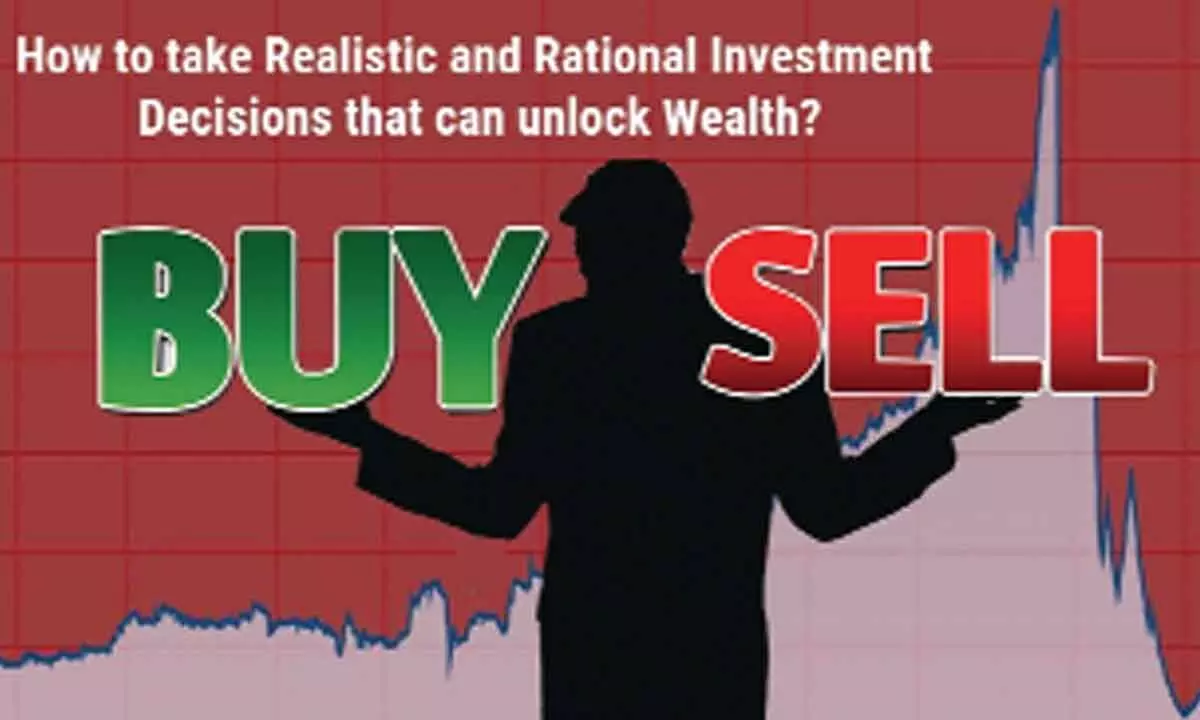Be rational to avert losses

Asymmetric experiences could cause investors to behave irrationally and make bad decisions such as to hold a stock for too long or too little time
Warren buffet once said, the first rule of investment is "don't lose money", and the second rule of an investment is "don't forget the first rule". That's the kind of importance he gave on risk assessment and the avoidance of loss while investing. It also helps him to accept thathe's fallible and prone to commit mistakes. What's even more important is on how quicklyone could recover from such bad decisions. Of course, no one could continuously beat themarket but when one loses, how does one know when to pull the plug?
In general, for the same quantum of loss or gain, people experience disproportionate pain(more) for a loss than a gain. This complicates the handling of investment mistakes whenthey occur. Most of us don't like to admit the wrong or failure of a particular investmentstrategy or philosophy, aggravating the losses further. The above instance of perceived lossis severe than an equivalent gain is called as Loss aversion, in behavioural finance.
Peter Bernstein in "Against the Gods" states that the evidence 'reveals repeated patterns of irrationality, inconsistency and incompetence in the ways human beings arrive at decisionsand choices when faced with uncertainty.' Behavioural finance attempts to seek anunderstanding on how and why emotions lead to cognitive errors that play such animportant role in decision making.
The psychological effects of this loss or potential to loss could induce risk taking attitude orbehaviour that jeopardizes the investment as it could worsen the realized losses. Thisasymmetric experience could cause investors to behave irrationally and make bad decisionssuch as to hold a stock for too long or too little time in the hope of making their initialdecision right. The lack of acceptance of wrong done could turn disastrous limiting for acourse correction.
We, humans are hard-wired to not lose, or we don't like to be on the losing side. In investing,this may lead to selling winners too early and/or holding on to losers too long, despite theanalysis showing the contrary. This cognitive bias is called disposition effect. This isespecially true with many investors not willing to sell at a loss from their purchase price.They stick to their argument on why they've assigned a particular value to the stock, attimes even ignoring the changed underlying parameters, hoping a bounce in the stock price.
Another common example of loss aversion is opting only for a safe avenue like bankaccounts, etc. with little or limited return potential while losing the actual value of theinvestment due to inflation. Even believing one hasn't lost until they sell a loss-makinginvestment despite knowing that the instrument has eroded its value.So, how could one avoid this rather common pitfall? The best way to avoid loss aversion isto always remain rational. When one turns emotional about their investments, could lead toblurred judgements. Ruling emotions is essential in making an informed decision that leadto profitable outcomes.
Another vital way to avoid loss aversion is by employing a strategic asset allocation strategy.This is a way of rebalancing the portfolio based on a pre-set defined weightage in theportfolio. This is done at various intervals especially when the markets have a decent run inthe market making one or more ingredients in the portfolio begin to occupy a higherweightage than planned. At these levels, the said stock or instrument is trimmed to thedefined weight so that the skewness is averted. This way the portfolio is periodicallyrebalanced to the targeted weights by lowering the positions of the outperforming assets orinstruments and adding up the underperforming ones. Strategies like smart beta have pre-defined weights to their constituents based on the capitalization to avoid marketinefficiencies.
(The author is a co-founder of Wealocity, a wealth management firm and could be reached
















